

|
Soundclip:
|
| See Steve's Hand-Written Solo
Transcription |
|
Steve Khan's solo on: "Too Late Now"(Alan Jay Lerner-Burton Lane) Growing up in a home where my father, lyricist Sammy Cahn, was constantly playing all the great songs from the theater and films, small wonder that these songs and their lyrics were of paramount importance. Little did I know back then that these very songs and the lyrics would be so interwoven into the fabric of my life, my musical life. When I think back, it is hard to imagine that such a great song as Lerner and Lane's "Too Late Now" could have somehow escaped me. 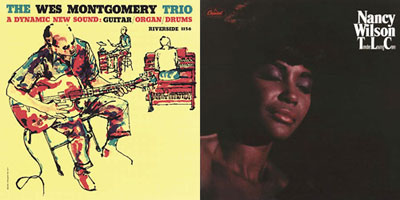 The first time that I recall seeing this title and hearing the song played, as an instrumental, was by Wes Montgomery on his 1st album as a leader: "A DYNAMIC NEW SOUND"(Riverside)(1959), which featured: Mel Rhyne(organ) and Paul Parker(drums). It wasn't too long after that that I happened to hear Nancy Wilson's version from her album "TENDER LOVING CARE"(Capitol)(1966) and this changed everything for me. In happy times, in sad times, hearing her singing this song has become a source of inspiration and comfort. The first time that I recall seeing this title and hearing the song played, as an instrumental, was by Wes Montgomery on his 1st album as a leader: "A DYNAMIC NEW SOUND"(Riverside)(1959), which featured: Mel Rhyne(organ) and Paul Parker(drums). It wasn't too long after that that I happened to hear Nancy Wilson's version from her album "TENDER LOVING CARE"(Capitol)(1966) and this changed everything for me. In happy times, in sad times, hearing her singing this song has become a source of inspiration and comfort.I had been thinking about arranging and recording this gorgeous song for years, but as each recording came along, it seemed that another ballad would push "Too Late Now" aside. But "PATCHWORK" was to be different, and I was not going to stop until I had found a way to honor the emotions of this song - as I hear and feel them. Originally composed for the 1951 Fred Astaire/Jane Powell film "ROYAL WEDDING," as I did my research I discovered that, for some reason, this song was rarely interpreted by male singers. When you can't find a version by Nat "King" Cole, Frank Sinatra or Tony Bennett, that's really strange! So, the Nancy Wilson version with an arrangement by the great Billy May, along with some of the touches that Wes Montgomery added, became my guide as I tried to find my own may to making this song mine! 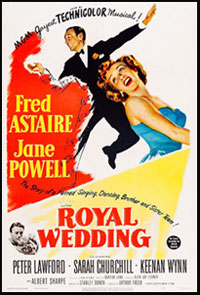 After I had finished laying out the basic shape that I wanted the tune to follow, I stumbled upon a fantastic arrangement that Johnny Mandel did for Diane Schuur. I'm glad that I didn't hear that one before! After I had finished laying out the basic shape that I wanted the tune to follow, I stumbled upon a fantastic arrangement that Johnny Mandel did for Diane Schuur. I'm glad that I didn't hear that one before!What I loved so much about Billy May's arrangement for Nancy Wilson was that the Intro begins with Nancy singing the bridge, and it is done rubato, and very dramatically. I wanted to use that sense, but, in no way, did I want to copy what Billy May had done. It took a long, long time to come-up with something that resonated emotionally with me. I decided to do the song in the same key as Wes, that being in C major, Nancy Wilson sings it in G major. In Wes' key, the bridge begins in the area of A minor, so how I could do something that captures the same feeling but avoids this harmonic area? Eventually, I found my way to having a C pedal, and over the top of that I created, what I thought to be, some Clare Fischer inspired clusters that moved from Gb/F to Fmaj9 for 8 bars, while the guitar melody was alluding to the bridge melody. Then, at bar 9, Rubén Rodríguez' beautiful sounding baby bass moves to an F pedal, and on top of it, I labeled the voicings as being Bb7(9/13) for 2 bars and then Bb7(13b5) for 2 bars, but I suppose that I could have just as easily labeled the chords in terms of Fm9/6(maj7). Here the bridge melody comes into more clear focus. Finally, there is a 4-bar transition through Ebm7-Ab7(13b9) to Dm7(9sus)-G7(13b9), and we were ready for the main melody. If you want to view the KEYBOARD LEAD SHEETS for the Intro and the Fade, just click on the link and you are there. But, the story does not end there. No, not at all. When I presented this tune to Rob Mounsey, I was surprised that he had never heard it before. In a way, that's a great thing because then, he comes to it with completely fresh ears and feelings. Rob completely surprised me with his orchestral arrangements for both "Our Town" and "Emily" from "BACKLOG"(2016), but just because I got lucky that time, it does not mean that I could count on the same gesture of friendship and generosity now. However, once again, Rob gave this song more than I could have ever expected, or even hoped for. The tricky element for us both was that I was really hoping that I could avoid having the presence of any keyboard instrument on this tune, and that the texture could be as transparent as was possible. So, I asked Rob if it was possible that he could assign my clustered voicings for both the Intro and the Fade to woodwinds. Perhaps even a texture that might resemble the mystical texture that Rob had created for "Never Let Me Go" on "SUBTEXT." As time passed, we had tried just about everything, and no matter what Rob did, I somehow could not get the sound that I had created with my "Rhodes" on my original demo out of my head. That was just what felt right to me. And it wasn't until just before we were about to mix with engineer James Farber that I finally asked Rob just to play the part with a sound that was closer to what I had first sent him. And so, this is what you now hear in both the Intro and the Fade. Though I somehow did not mention it, "Too Late Now" falls into the classic A-A-B-A 32-bar form. The solo format was going to be simple. It would only be one chorus in length, 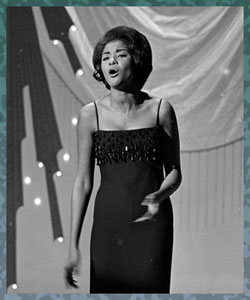 and would have a transparent texture up until letter [D], the bridge, where the orchestration would re-enter. From a rhythmic perspective, we would again be employing what we have come to know as an Afro-Bolero-Cha with the cha-cha appearing as a surprise going into the long Fade. All of this is beautiful and creatively played by Marc Quiñones(timbal, bongó, mini-maracas, and güiro), Bobby Allende(conga) and the sensitive brushwork of Dennis Chambers. In my original arrangement, I had [C3] modulating up a 1/2-step to Db major before returning to C major for the last melody statement. and would have a transparent texture up until letter [D], the bridge, where the orchestration would re-enter. From a rhythmic perspective, we would again be employing what we have come to know as an Afro-Bolero-Cha with the cha-cha appearing as a surprise going into the long Fade. All of this is beautiful and creatively played by Marc Quiñones(timbal, bongó, mini-maracas, and güiro), Bobby Allende(conga) and the sensitive brushwork of Dennis Chambers. In my original arrangement, I had [C3] modulating up a 1/2-step to Db major before returning to C major for the last melody statement.The pick-up to the solo, which was not transcribed, if I was going to critique myself, I would say that it certainly sounds like the great George Benson from another time. Sometimes, over a maj7 chord forcing the blues over it can sound really corny - and forced! But, George had a way doing it where he doesn't put that much emphasis on the blue note of the m3rd and that can make all the difference in the world. What I played has the 4th(F) and a quick Eb grace-note into E-natural before finishing the phrase that ends-up E up to C. As we hit letter [C], as I had mentioned, the texture completely thins out and we basically have guitar, bass and percussion. As I often do at the beginning of solo, especially when the setting has gone from dense to transparent, I like to play some chordal colors so that the established sense of harmony remains familiar to those listening, and even my bandmates. The style of these harmonies remains consistent as very keyboard influenced with McCoy Tyner, Chick Corea and Herbie Hancock in the forefront. In bar 3, on beat 1, I play a 4-note voiced E triad over Rubén's bass note 'C' as there is something I love about that sound because the G# seems to be crying out to resolve itself to A-natural. And, as you can see, the first note of the single-note line that follows is A-natural. From there I stay pretty diatonic until midway through bar 4, over the G7 chord, I am playing chord tones from the b5 sub Db7(9), and this line works its way down to G. In bars 5-6, a sense of melody continues with a small rhythmic motif to glue things together. In the 2nd-half of bar 6, over the F#m7-B7, I am playing F# Dorian [F#, G#, A, B, C#, D#, E] with some chromaticism. You should also make note of the phrasing mannerism on beat 3 - these small details are hugely important if you want to sound like you are speaking the Jazz language. In bar 8, over to iim-V of Dm7 to G7, I ascend using an F triad, and then descend using an E triad which gives the sonority of 7(13b9) without any chords being present. Remember, G# and C# could just as easily have been spelled as Ab(b9) and Db(b5). As [C2] begins, I am playing using E minor pentatonic [E, G, A, B, D] of Cmaj7 as it gives almost all of the beautiful color tones: 6th, 9th, maj7th. Over the Fm7 in the 2nd-half of bar 2, I am playing F Dorian [F, G, Ab, Bb, C, D, Eb]. in bars 3-4, you hear a rhythmic motif before another line over G7 puts to use the sounds of Db and a simple Db triad, which finds its way to resolution in bar 5 on Cmaj7 with an E-natural. The sense of modal playing with chromaticism continues in bar 6, and while I am playing behind the beat on purpose, there's an interesting touch in bar 7, where this time, over the G7 chord, I outline Eb7 chord tones: Bb(#9), G, Db(b5), Bb(#9), Eb(#5). As Rubén cadences to Cmaj7, you will see that using lines, I have again gone to an E major triad, and what should be the first note afterwards? A-natural again! From there, it's a descending line heading towards our wonderful bridge and the return of Rob's orchestration. Perhaps this is a good moment to take a break and to look at the lyrics, because, while playing, these words are always in the back of my mind. The way we cling when we danced awhile Too late now to forget and go on to someone new Too late now to forget your voice The way one word makes my heart rejoice Too late now to imagine myself away from you All the things we've done together I relive when we're apart All the tender fun together Stays on in my heart How could I ever close the door And be the same as I was before? Darling, no, no I can't anymore It's too late now 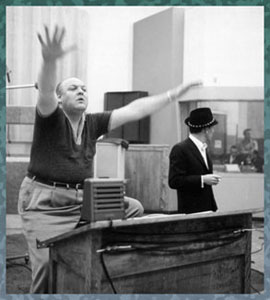 In bar 4, the first bent note of this solo appears on a high 'C' with vibrato and seems to descend via A Dorian [A, B, C, D, E, F#, G]. In bar 5, over the iim7b5-V, I am really, in part, ignoring the iim7b5 chord and immediately playing via D altered dominant [D, Eb, F, F#, Ab, Bb, C] with some chromaticism. Once again, as the Gm9(maj7) chord arrives in bar 6, the phrase ends with the interval of an ascending 6th: Bb up to F#, and then a bent note up to a high F#. You could say that this whole bar was related to G melodic minor [G, A, Bb, C, D, E, F#]. In bar 7 over the C/D [D7(9sus)] sonority I am playing A Dorian. Then in the first 1/2 of bar 8 I am playing D minor pentatonic [D, F, G, A, C] over G7sus, and as the modulation begins, over the Ab7(13b5), I descend via the Ab half-tone/whole tone diminished scale [Ab, A, B, C, D, Eb, F, Gb] landing on a nicely consonant Ab for the start of the final section. In bar 4, the first bent note of this solo appears on a high 'C' with vibrato and seems to descend via A Dorian [A, B, C, D, E, F#, G]. In bar 5, over the iim7b5-V, I am really, in part, ignoring the iim7b5 chord and immediately playing via D altered dominant [D, Eb, F, F#, Ab, Bb, C] with some chromaticism. Once again, as the Gm9(maj7) chord arrives in bar 6, the phrase ends with the interval of an ascending 6th: Bb up to F#, and then a bent note up to a high F#. You could say that this whole bar was related to G melodic minor [G, A, Bb, C, D, E, F#]. In bar 7 over the C/D [D7(9sus)] sonority I am playing A Dorian. Then in the first 1/2 of bar 8 I am playing D minor pentatonic [D, F, G, A, C] over G7sus, and as the modulation begins, over the Ab7(13b5), I descend via the Ab half-tone/whole tone diminished scale [Ab, A, B, C, D, Eb, F, Gb] landing on a nicely consonant Ab for the start of the final section.With the modulation to Dbmaj7 complete, we have arrived at [D] and the last section of the solo. Here, even though I use a G-natural as a neighboring tone, I would say that I am exactly playing in Db Lydian [Db, Eb, F, G, Ab, Bb, C] because Ab is really the more important note. It feels more to me like F minor pentatonic [F, Ab, Bb, C, Eb]. In bar 2, as we go from Ebm7 up to Gbm7(9), I begin with playing in Eb Dorian [Eb, F, Gb, Ab, Bb, C, Db] and shift to Gb Dorian [Gb, Ab, Bbb(A-natural), Cb(B-natural), Db, Eb, Fb] where the Bbb or, as written, A-natural plays a pivotal role in pulling down a 1/2-step to Fm7 and F Dorian in bar 3 of the section. in the 2nd-half of that bar over Bb7, I again use a simple Bb augmented triad descending F#-D-Bb to pull to the ii-V in bar 4: Ebm7-Ab7 using Eb Dorian [Eb, F, Gb, Ab, Bb, C, Db] and over the Ab7 chord I am playing B dominant 7th pentatonic [B(#9), C#, D#, F#(7th), A(b9)]. In bar 5, I am really just playing melodically in Db major, nothing special. However, in bar 6, as we arrive at a II7 chord, Eb7(9), I play a phrase with 'swing' to it, and you can hear Dennis Chambers picking up on that, and throw in the b5 (A-natural) as a color tone with F-natural being the real target note. Bar 7 and the ii-V of Ebm7-Ab7 mixes Eb Dorian and Ab altered dominant [Ab, A, B, C, D, E, Gb] to resolve down to Ab over the Dbmaj7 chord, and with the last 2 beats devoted to our transition back to Cmaj7, I simply went down a 1/2-step and played a simple phrase that has a bluesy element to it while not being over-the-top about it - and back to the melody we go. I haven't really addressed the important concern of tempo or tempos for all of the boleros that have graced these last 4 albums. In each case, my only concern was finding a tempo that felt 'right' for the particular melody - that was it! And so, "Too Late Now" landed @ Q=80. As I was writing this analysis, 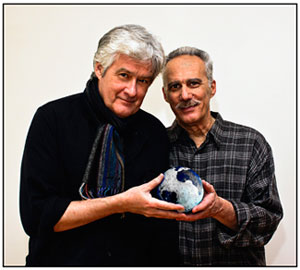 I checked back to see just what were the tempos of the other boleros. Firstly, on this album "Bouquet" came in @ Q=75. "Our Town" from "BACKLOG" had a tempo of Q=92. But, I have to admit that I was shocked to learn that "Never Let Me Go" from "SUBTEXT" was also @ Q=80. Finally, "When She's Not Here" from "PARTING SHOT" came in at roughly Q=76. So there's a range of about 20 metronome markings - whatever that means. I checked back to see just what were the tempos of the other boleros. Firstly, on this album "Bouquet" came in @ Q=75. "Our Town" from "BACKLOG" had a tempo of Q=92. But, I have to admit that I was shocked to learn that "Never Let Me Go" from "SUBTEXT" was also @ Q=80. Finally, "When She's Not Here" from "PARTING SHOT" came in at roughly Q=76. So there's a range of about 20 metronome markings - whatever that means.Though it is impossible to say exactly where the music business, the Jazz business is headed, working so hard on these recent albums, I have had some interesting conversations with people who are on the other side of the making of the actual music. At least for now, radio is, in the USA, still the primary means by which the recording artists are able to reach the ears of the people - if at all. During the run of "BACKLOG," I had some frank talks with various radio people, both music directors and the DJs, and I was curious to learn why it seemed that the beautiful ballads from my albums were not getting played that much. It didn't make any sense to me. But, one person, who is an important music director for a large and popular station confessed to me that "ballads" are not really great things to play, because the majority of their listeners are driving while listening - and no DJ wants to put them to sleep with a ballad - so, medium to uptempo tunes keep everyone's interest piqued. "We have to keep up the energy!" I'm certain that this perception is based upon reliable statistics. Intellectually, I suppose that this made some sense, but I found this answer to be disturbing and a bit disheartening. Not that it was enough for me but, "Emily" from the last album did seem to get played a bit more than "Our Town." Perhaps because "Our Town" is a rather obscure tune? It seems incredible to me that people, the listening public, would not want to hear these beautiful ballads. So now, with both "Bouquet" and "Too Late Now" from "PATCHWORK," I am going to be fascinated to observe just what happens. But, I for one will be hoping that these ballads make it to the airwaves. As I am writing this a couple of months before the release, I have no idea what is going to happen. 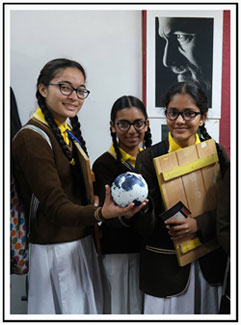 In times like this, one can be hopeful, but, one is very scared too. I will say this, and that is that, I can't ever imagine making a recording without a beautiful ballad, perhaps even two. In times like this, one can be hopeful, but, one is very scared too. I will say this, and that is that, I can't ever imagine making a recording without a beautiful ballad, perhaps even two.If most of you are fans of these past four albums, then you would surely know that the artwork of the great Michel Granger has graced my CD covers on all of them - sometimes with releases in other countries like Japan, I have even been able to present a second image. I have been a fan of Michel's work, and the philosophy behind much of that same work, since the early '70s, when I first started to collect some of his poster art. I never imagined that I would one day actually meet him, become friends, and be able to share his work via my albums. It has been a great thrill for me. As I was preparing for the recording, one of the things that I always do is make certain that the great bassist Rick Laird, now a great photographer Richard Laird would be at one of the recording dates to document the goings-on with individual photos, and a collection of group photos as well. This time, for "PATCHWORK," we tried some different things, including some black & white portraits of each of the guys. And, I brought along my Michel Granger Globe to have it in some of the group photos in addition to some of my individual photos. As you can see, quite spontaneously, Rob Mounsey and I ended-up taking one of these shots together - and I love this photo. It bespeaks of years of friendship, and our shared interest in doing a little bit of something to echo Michel Granger's desire that we all have to do a little more to "save this glorious planet"!!! Recently, on another one of his trips to India, Michel took a series of wonderful photos with adults and children alike, but I was most touched by the photos of beautiful school children posing with and holding the Granger Globe with smiles and love. I am offering one of those photos here.
[Photos: the fancy Miss Nancy Wilson
Billy May and Frank Sinatra Rob Mounsey and Steve Khan with the Michel Granger Globe @ Sear Sound by Richard Laird] |